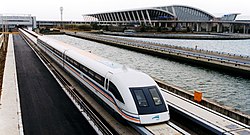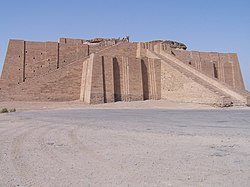Ionicus
This article is incomplete because it is pending further input from participants, or it is a work-in-progress by one author. Please comment on this article's talk page to share your input, comments and questions. Note: To contribute to this article, you may need to seek help from the author(s) of this page. |
The United Technocratic Republics of Ionicus | |
|---|---|
Official State Emblem
| |
| Motto: "Semper Vigilans" | |
| Anthem: "Forward unto Tomorrow" | |
| File:IonicusOutline.png | |
| Capital | Ĉefurbo |
| Largest | Akarov |
| Official languages | Esperanto |
| Ethnic groups (2017) |
|
| Demonym(s) | Ionician |
| Government | Federal constitutional republic |
• President | Ronald R. Terezis |
| Area | |
• | 485,672 km2 (187,519 sq mi) |
| Population | |
• 2016 census | 101,232,872 |
• Density | 208.4/km2 (539.8/sq mi) |
| GDP (nominal) | 2017 estimate |
• Total | $6.376 Trillion |
• Per capita | $62, 980 |
| Gini (2017) | low |
| HDI (2017) | very high |
| Currency | Ionic Credit (₹) ((IC)) |
| Time zone | UTC + 0 |
| Date format | dd-mm-yyyy CE |
| Driving side | right |
| ISO 3166 code | ION |
History
Geography
Government
Constituent States
Foreign Relations
Military
- IonicInfantry.jpg
Ionic soldier, wearing a helmet equipped with a ballistic mandible.
- IonicusSubmarine.jpg
One of 8 nuclear powered Citadel-class ballistic missile submarines.
- IonicusDrone.jpg
The UBD-2 stealth drone, capable of unmanned, long-range reconnaissance and attack roles.
- IonicusMissileDefense.jpeg
The ground-based anti-ballistic missile launcher system, ABMM-12.
Education and Science
Education
Since the era of reconstruction started, education has been a top priority for the Ionician government. The robust and well-funded education system is often cited internationally as being the best in Astyria. All schools, public and private, must be registered with the Department of Education, which oversees all schools and establishes curriculum requirements. The population of Ionicus is one of the most highly educated in Astyria with 68% holding post-secondary degrees and 3.1% holding PhDs.
The educational system is divided into four categories: pre-primary, primary, secondary, and tertiary. Pre-primary schools are offered for children aged 0-4 years old; although the intended purpose of the pre-primary schools is to function as a state funded child care program for working families, there is some educational curriculum, mostly focused on the development of language skills. Attendance at the pre-primary level is not mandatory, though its use is commonplace.
At age 5, school attendance becomes mandatory and the student enters the primary school level. Secondary schools introduce a wide number of subjects such as Esperanto, Mathematics, Science, Civics, Computer Programming, and Health/Physical Education. All primary schools feature a gifted education wing, where the highest performing students are taught advanced subjects. At the completion of primary school, at age 12, students take the Primara Lerneja Eliro Ekzameno (PLE Exam) or Primary School Exit Examination. The PLE Exam is a standardized test which helps a student determine their secondary school.
After a student has completed primary school, they begin mandatory attendance at the secondary level until age 16. Students can elect to go to a specialized secondary school based on the results of their PLE Exam. Specialized secondary schools require a minimum score in certain areas of the PLE Exam, though this can be waived if the student shows exceptional merit in a school’s concentration. General studies secondary schools cater to those who do not wish to attend a specialized secondary school. Examples of concentrations for specialized secondary schools are Computer Programming, Military Science, Engineering, Agricultural Science, and Music.
Following graduation at age 16, students enter the National Service Program, which composes the bulk of the tertiary education system. The National Service Program is a 2 year commitment where a student elects to attend a university, enlist in the military, or serve in the National Development Corps. Participation in the National Service Program is required to become a full citizen in Ionicus. The majority of students attend universities for 2 years, often entering a Mallongigita Teknika Programo, or Shortened Technical Program, a special type of STEM degree that does not require attendance in any classes not related to the core subject. Four year degrees are also offered. Those who choose to serve in the military are placed in positions based on the needs of the Department of Defense and their military entrance exam scores; support positions, such as medic or logistics specialist, are offered to those who are conscientious objectors to war. In the National Development Corps, enlistees work on national construction projects such as dam or highway construction and maintenance. If a participant in the National Development Corps takes on a specialist role which requires on the job training, such as a welder, they are awarded an educational certificate.
After participation in the National Service Program, individuals may elect to enter the workforce, attend a university, which is free for 6 years for any student with an overall grade average of 70%, or join the military with a four year contract. Participation in the National Service Corps is always available to those seeking employment and is mandatory for those who receive certain welfare benefits.
Science

Ionicus is a leading nation in scientific research, primarily in the fields of robotics, life sciences and military technology. Historically, Ionicus has contributed heavily to the fields of nuclear technology, computers, and telecommunications. DEFTELN was a network of military computers established in the late 1960s and is often considered to be one of the precursors to the internet. Research and development spending, as a percentage of the GDP is the highest in Astyria.
Research and development spending is tax deductible, and as such many international companies source their development and design facilities in Ionicus. This has also led to the creation of several high tech products created in Ionicus becoming popular in other nations.
The Ionician Space Agency is one the oldest, best funded, and developed space programs in the world. The ISA operates a network of GPS and communication satellites and several probes to explore the solar system. At its height, the ISA operated a small lunar colony which housed astronauts for six months. The ISA is one of the largest contributors to the Astyrian Orbital Space Station, second to Kobolis.
Economy
The Ionician Economy is categorized as being very highly developed, having high productivity per capita, and as a mixed economy. Ionicus's high quality university education and government policies are often cited as the cause for the nation's prosperous high technology sector. Historically, state-owned enterprises comprised the bulk of the Ionician Economy, but economic reforms in the 1970s through the 1980s allowed for the development of a highly prosperous private sector and a resultant major reduction of state-owned enterprises.
The base of the Ionician Economy lies in the manufacturing sector which comprises nearly 30% of the overall GDP of Ionicus. Nearly all of the manufacturing facilities in Ionicus are automated, due to heavy subsidization of robotic manufacturing equipment given in exchange for a small tax increase. International corporations frequently locate their manufacturing facilities in Ionicus, due to the low automated manufacturing costs. The largest exported goods are machines/electronics (53.2% of exported goods), chemical products (12%) and military hardware (8.7%). The service sector constitutes the majority of the Ionician Economy, with the largest sectors being information technology, finance, shipping, and tourism.
Although the majority of industries in Ionicus are privitized, the state still operates several large enterprises. The largest publicly owned corporation is IonAg, which typically produces 85% of the agricultural products made in Ionicus. IonAg utilizes several technologies such as aquaponics and genetically modified organisms to create food security in a nation where there is little arable land. Other publicly owned sectors include energy, arms manufacturing, telecommunications, and water treatment.
Unemployment in Ionicus typically falls between 1-2%, due to guaranteed employment through the government and employment being required for most welfare programs. The average annual wage (nominal) for Ionicus was 46,199 Ionician Credits (88,241 USD). The federal income tax varies widely. The first 15,000 IC (28,650 USD) an individual earns in a year are subject to a 5% tax rate while any earnings over 150,000 IC (286,500) a year are taxed at the maximum rate of 75%.
Workers in Ionicus enjoy a number of benefits. Minimum wage is set based on average living costs in each municipality. Workers a guaranteed a minimum of 2 weeks paid vacation annually and 6 months of paid parental leave for one parent. Vacation time accrued cannot be “lost” although exchanging vacation time for equivalent wages is allowed.
Energy, Infrastructure and Environment

The Ionic Department of Energy provides most of the electricity generated in Ionicus. 56% of all electricity generated in Ionicus comes from nuclear power, as the Department of Energy operates 43 nuclear reactors as of 2018. Solar energy (21%), wind (4%) and tidal energy stations (4%) comprise the renewable energy sector. The remaining electrical generation comes from hydroelectric (8%) and natural gas (13%) primarily sourced from landfill gas. In 2005, the Ionician government announced plans to decommission all nuclear reactors by 2040 and have them replaced with renewable energy sources; as of 2018 17 reactors have been decommissioned. Energy usage efficiency within Ionicus consistently scores very highly, with several government initiatives such as mandated insulation requirements in all new buildings.

Biodiesel, generated from algae, dominates the fuel markets, followed by natural gas, ethanol and petroleum products. The Ionic Department of Energy heavily subsidies the manufacture of algae biodiesel, making it economical for usage in most vehicles. Due to low fossil fuel reserves, the Ionician Government thought it strategically necessary to develop its energy independence, hence the low usage of fossil fuels.
Automobiles are the most popular form of transportation, although rail transportation is incredibly popular due to high fuel prices. The Ionician publicly managed road network spans nearly 1.5 million km (932,057 mi). A network of unlimited speed toll roads form the National Highway System which connects all cities. The Ionician National Rail System consists of high speed maglev trains for passengers and lower speed rail lines for the transport of goods. Nearly all goods are transported by rail.
The Ionician government is highly protective of its environment, as one of the main principles of Ionician Technocracy is harmony with the natural world. Even as early as 1934, legislation was introduced to minimize pollution. The 1950s through the 1970s would see major expansion of environmental legislation as the government created large subsidies for clean industries, constructed nuclear power stations, expanded its recycling program, and began encourage solar and wind use in buildings. The distinctly Ionician Fabakag facilities, pioneered by Dr. Karesinda, began appearing in significant numbers during the 1980s. Fabakag facilities combine a manufacturing facility (usually chemical), a water treatment plant, and a hydroponic farm into one complex, utilizing aspects of each to eliminate pollution.
Ionicus is one of the only countries in the world with negative carbon emissions. Ionicus was the creator of the Khasde Protocol, an international treatise on preventing climate change. Recycling is an important part of waste management in Ionicus, typically reporting that around 80% of all recyclable materials were recycled. Organic waste is used in the generation of synthetic natural gas, an important resource in the Ionician economy. Illegal garbage disposal, such as littering, is met with strict punishment and heavy fines. Citizens in the National Development Corps can be assigned with jobs such as litter collection or tree planting.


